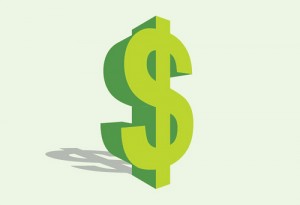
A hedge is a trading position taken to neutralize changes (gain or loss) in another, primary position. The classic hedge involves agricultural commodities. A palm oil producer (for example) has a crop they intend to sell in six months. To guard against a dramatic fluctuation in palm oil prices, the producer establishes a futures market position that fully covers their risk of owning palm oil; this fixes (guarantees) the current commodity price for them. Should palm oil suddenly fall in price, the producer will not lose; should the price increase, they will not gain. The arrangement is undertaken to acquire certainty; it is entirely non-speculative.
Prevent Losses
Ownership always entails the possibility of loss. The diamonds can be stolen, the house can burn down, the stock can fall. It is common to pay for insurance against loss or damage — insurance is a type of hedge. Diamonds and houses can be insured; so can stocks. The risk of establishing an ownership (long) stock position can be reduced by also paying for insurance; this is invariably done with put options. Combining put options and stock ownership (the “protective put”) generally results in one of three outcomes: the stock is unchanged and the investor loses the relatively small option premium; the stock rises and the investor’s profit is slightly offset by the premium; the stock falls but the option becomes more valuable, mostly offsetting the investor’s loss. An investor can simulate this position using binary options – buying put options and call options from reputable USA binary options dealers.
Going Short
An investor buys stock with a bullish or neutral outlook. When the outlook is bearish, the equivalent stock position is the short. Working with a lender (invariably the broker-dealer), the investor simultaneously borrows and sells the target stock, hoping it will fall. This is short selling, or going short. The investor closes the position by buying the target stock and simultaneously reimbursing the lender. Short selling is not free; the investor must sometimes pay fees and must maintain a dynamically varying minimum account balance (margin).
Short Squeeze
The short seller suffers when the stock refuses to fall and, in fact, rises in price. When a shorted stock rises, it can do so significantly due to the mechanism of shorting itself. As the price rises, more and more short positions will (usually automatically) close to limit loss; closing a short involves buying, and buying generally increases prices. This accelerating cycle is called a short squeeze.
Just as stock ownership can be insured by purchasing put options, stock short selling can be insured by purchasing call options. If the short trade goes the wrong way (up), the investor’s call options will increase in price. Furthermore, the account’s margin requirements are fixed. The combination of long call and short stock is known as the synthetic long put.
This article was provided to us by http://www.Bozzle.co.uk








